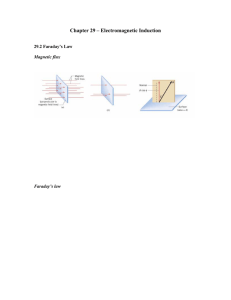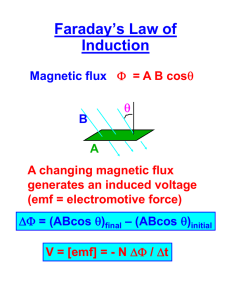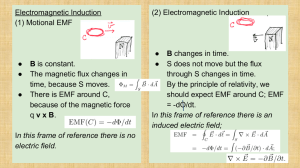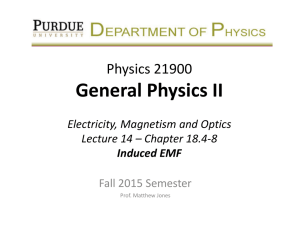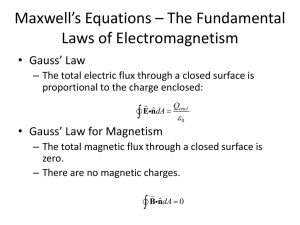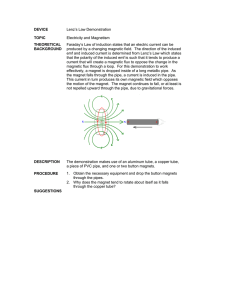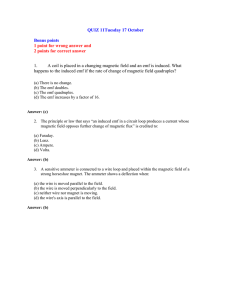OUTLINE 1. Faraday’s law of Faraday’s law into words)
advertisement
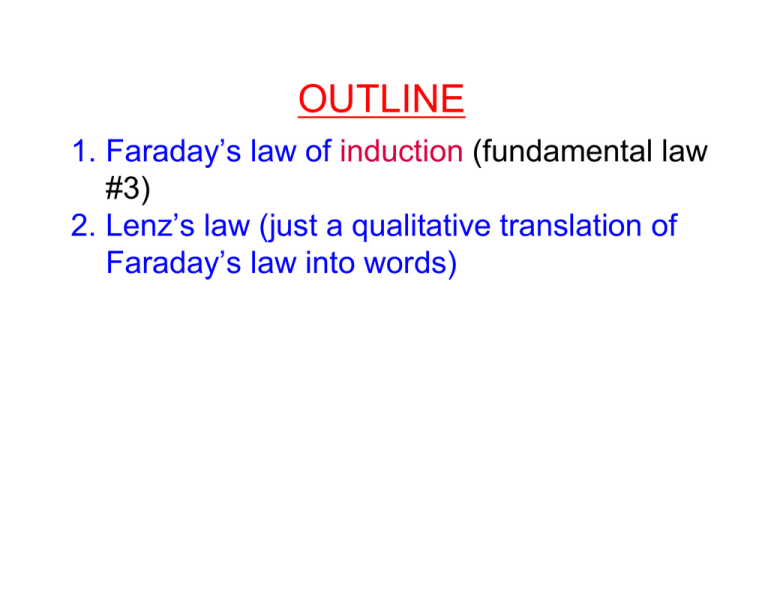
OUTLINE
1. Faraday’s law of induction (fundamental law
#3)
2. Lenz’s law (just a qualitative translation of
Faraday’s law into words)
Induction: fundamental law #3
Discoveries by Faraday and Henry:
Changing magnetic field produces current in a wire
loop.
• Induced current i: depends on
{
rate of change of B
wire resistance
• Induced emf that drives i: depends only on the rate of
change of B.
Magnetic flux
Magnetic flux
Electric flux
r r
r r
ΦB = ∫ B ⋅ dA (T m2) Φ = ∫ E ⋅ dA (N m2/C)
Surface defined by a
conductive loop
Closed surface
(Gaussian surface)
• 1 T m2 = 1 weber = 1 Wb
ΦB = BAcosθ
if B is constant and surface
is flat.
Lenz’s law (just a qualitative translation of F’s law)
The direction of the induced emf is such that
the resulting current opposes the change in
ФB.
Three ways of changing ФB through a coil
1. Change B
2. Change the area A of the coil
3. Change the angle θbetween B and A
Let’s examine an example of each method.
Check Point for Changing B
Q1 Is the induced emf
and current clockwise or
counterclockwise?
Clockwise
Q2 What does the ammeter
read, when the magnet is held in place? Zero
Q3 What happens while the magnet is being
pulled back? Counterclockwise emf and current
Q4 What happens if the S pole of the magnet
is pushed toward the loop?
Counterclockwise emf and current
Changing A
